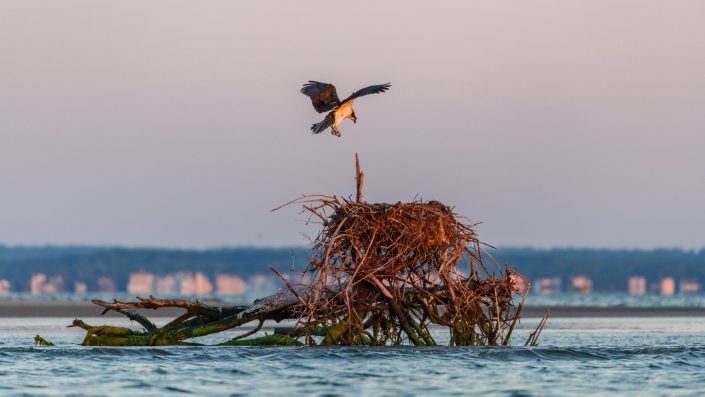Orphaned Osprey Chicks Find New Homes
by Sherry Tirgrath, Wildlife Biologist
Three young osprey chicks found themselves without their parents after a utility pole nest caught fire at the National Guard Training Center (NGTC) in Sea Girt, NJ. Osprey often choose utility poles as nesting structures because of the 360° view they offer. Fires caused by the nests, composed mostly of dried sticks and seagrass, aren’t uncommon. Because of the safety hazard imposed by the nest, it was removed from the utility pole at the NGTC with three healthy chicks inside. The chicks were approximately a week to ten days old when removed from the nest and were brought temporarily to The Raptor Trust in Millington by Charles Appleby, Chief of the Environmental Bureau of the NJ Department of Military and Veterans Affairs (NJDMAVA) to be cared for while a new nesting platform could be built. Reuniting the chicks with their parents in a safe nest box would give them their best chance at survival.



